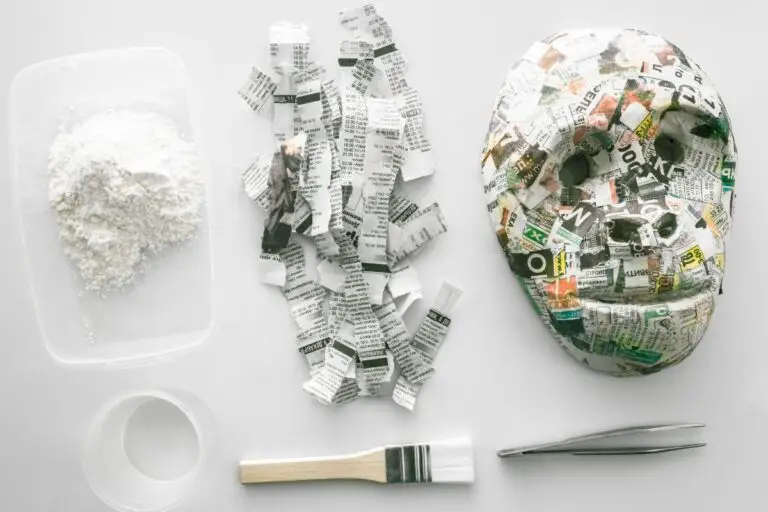How to Make Dry Glue Wet Again? … Quickly!
Glue is a common household item as it’s used for repairing items, making crafts, and various other reasons.
However, there is a frustrating problem that’s common with almost all kinds of glue and that is finding out that the glue has hardened and dried inside of its container.
Luckily, there are some ways you can get the glue soft and sticky again so you won’t always have to throw away the bottle to buy a new one.
So, how to make dry glue wet again? To make dry glue wet again, you need to pour freshly boiled water into a wide container then submerge the entire glue bottle or tube into the water for about 10-15 minutes. Another method is to add a few drops of paint thinner to the glue to make it softer, however, this might weaken the adhesive properties of the glue.
Keep reading to learn more about how to soften the glue and how to prevent it from drying in the container.
Contents
How Does Glue Dry?
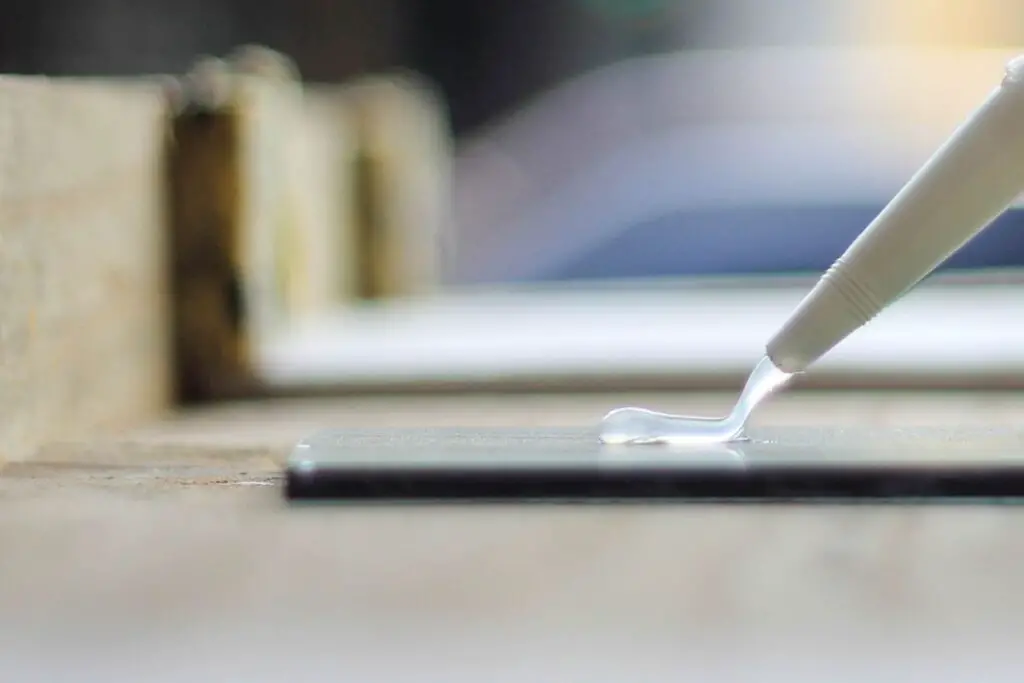
There are various kinds of synthetic glue that are made from different chemical substances which is why they dry in different ways and at different rates.
White Glue or PVA-based glue contain water in their formula which affects the consistency of the glue. The water basically acts as a solvent that keeps the glue in a liquid form until you want it to stick.
Once you apply the glue on a surface, the water will be exposed to air then it will gradually evaporate. When the water evaporates, the glue will harden and dry because all that will be left are the sticky base components in the glue, PVA polymers, which will bond with the surface.
However, when the glue is sealed inside the container, it will not be exposed to enough air to cause the water to evaporate which means the glue will remain in a runny liquid form without sticking to the inside of the container.
You can learn more about how glue dries in this article on how to make glue dry more quickly.
On the other hand, Super Glue is different and tends to become dry insides its container more often than white glue. That is because super glue is made from a chemical component called cyanoacrylate which reacts quickly with moisture or water vapor in the air and forms extremely strong bonds with any surface. You can learn more about Super Glue in this article on using superglue on electronics.
How to Fix Glue That’s Dried in the Container?
If your glue becomes dry while it’s inside the container, don’t be quick to throw it away as there might be some hope of salvaging it and getting it soft again.
Poke a Hole in the Cap
Sometimes only the surface of the glue becomes dry inside the container and not all of it. The surface will usually harden forming a thin layer that seals the container and prevents the rest of the liquid glue from flowing out.
In that case, you can easily fix the issue by breaking through that thin hard layer. You can do that by poking a hole on the cap of the container using a pointed tool such as a pin or a screwdriver.
Heat with Water
If all of the glue is dried inside the container, you will need to expose it to heat to make it soft.
The best way to do that is to pour boiled water into a wide container then place the glue container in the water until it’s completely submerged.
Leave the glue container to soak in the water for 10 to 15 minutes before taking it out. Wait until the container is cool to touch and press on it firmly to squeeze the softened glue out. If the glue has not softened the first time you heat it, be patient and give it a few more tries.
Use a Paint Thinner
If heating the glue with water does not soften it enough, you can try adding a few drops of a paint thinner to the glue to make it runnier. However, keep in mind that using too much of the paint thinner might cause the adhesive properties of the glue to weaken so it will become less sticky.
Can You Make Dry Glue Sticky Again?
If the glue has lost all of its moisture when it dried it will be almost impossible to make it sticky again. You might be able to soften the glue or even get it to a liquid form by exposing it to heat, but the adhesive properties of the glue will be too weak to form bonds with any surface.
How to Prevent Glue from Drying in the Container?
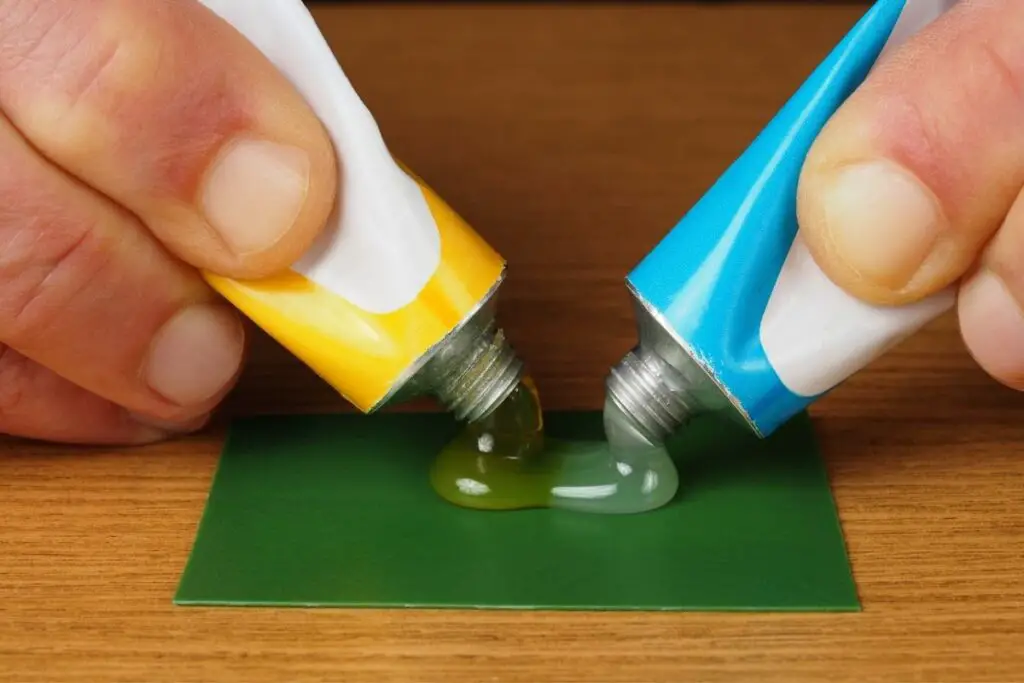
Glue mainly dries due to loss of moisture and exposure to air, so the best you can do is make sure that the cap of the container is tightly sealed when you’re not using the glue.
If you’ve lost the cap of the glue, you can try to cover the top with tape or stick any small hard object in the hole to prevent air from entering the glue container.
You also need to make sure the glue is stored properly. It’s recommended to put the glue container in a sealable bag (a zip-lock bag) then store it in a cool dry place. For added protection, put a small package of silica gel where you’re storing the glue container to help trap and retain moisture.
How to Soften Glue That’s Dried on a Surface?
To soften the glue that’s dried on a surface, you can press a cloth that has been soaked in hot water with soap on the surface for about 10 minutes. If the hot water does not penetrate the glue, you can use olive oil, vinegar, acetone, rubbing alcohol, or lemon juice instead.
Once the glue is softened enough, you easily wipe the surface with a dry cloth or scrub it with a brush to remove the glue completely.
Related Questions
How to Restore Dried Glue Sticks?
You can restore dried glue sticks by placing them in a zip-lock bag along with wet paper towels. Make sure that the paper towels are not dripping wet but not too dry either. Seal the zip-lock bag and leave it for 8-12 hours before taking the glue sticks out and testing them. The moisture in the paper towels should soften the glue and restore it to its original state.
Can Glue Expire?
Glue can expire if it’s past its expiration date or if it’s not stored properly. The expiration date can be found on the container and, on average, a sealed glue container can last from 8 to 12 months. To make glue last longer, it’s recommended to keep it tightly sealed and stored in a dry location away from extreme heat.
Helpful Resources
If you like this article, share it!

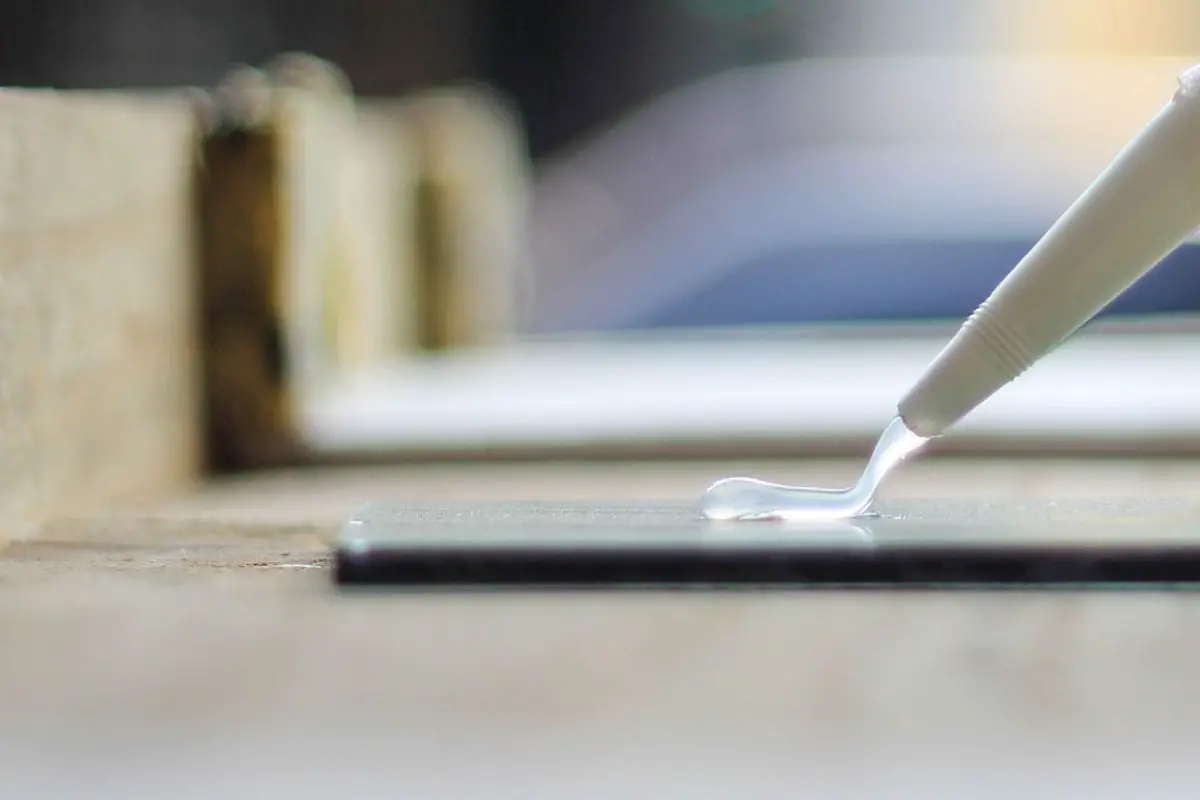

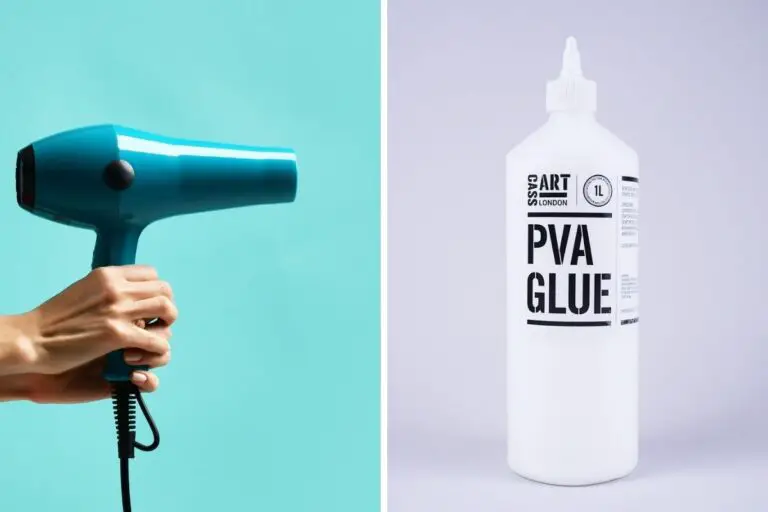
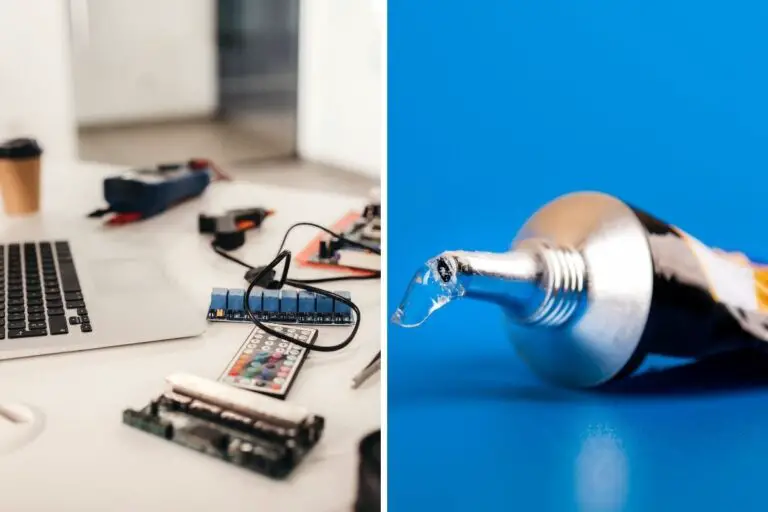
![When to Glue Drywall? [+ How & What Glue Types to Use]](https://simpleglue.com/wp-content/uploads/2021/11/finishing-drywalls-768x512.jpeg)
